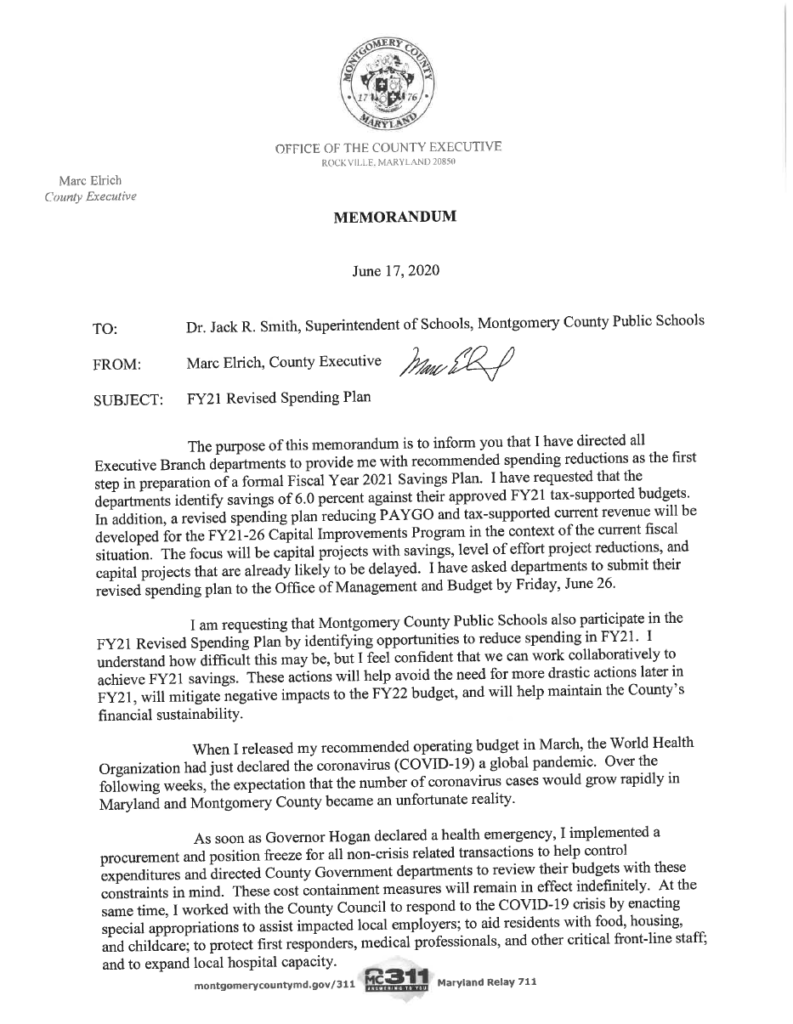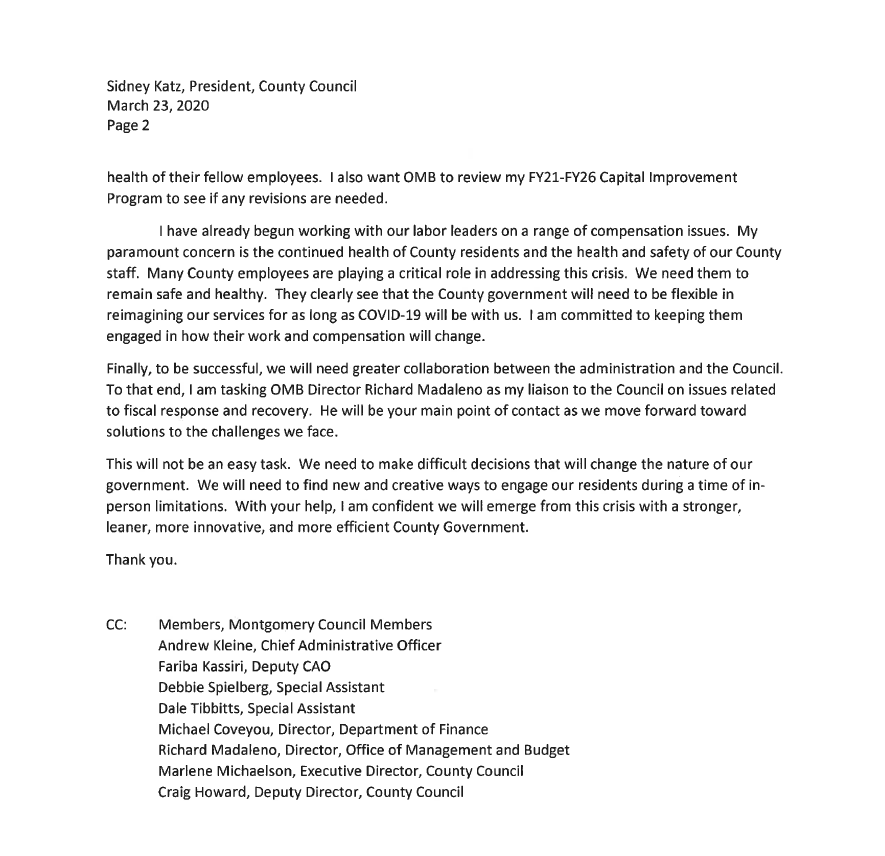By Adam Pagnucco.
You heard that deafening noise, yeah? It came from Rockville, specifically from Monroe Street. It was the sound of the county budget being blown to smithereens. And it probably won’t be the last loud noise heard echoing from the county seat.
Why the explosion? That’s what it sounds like when the county writes down half a billion dollars over two years.
A dryly titled document known as “Update on County Tax Revenue Estimates” will be reviewed by the county council tomorrow. Budget writers tend not to be very dramatic people. That’s one reason why summer blockbusters tend not to be centered on budget analyses. But this blockbuster contains more exploding ordinance than a World War II battlefield. Ground zero is MoCo.
The COVID-19 crisis is now blowing up budget after budget all over the world and we are not immune. In FY21 (the current fiscal year), the county was supposed to receive roughly $4 billion in locally generated tax revenues. (The county gets another $2 billion in intergovernmental aid, grants and non-tax revenues). Of the $4 billion or so in local taxes, here are the projected writedowns as of last week.
FY20 (last year): $47.7 million
FY21 (this year): $192.0 million
FY22 (next year): $282.0 million
FY23: $275.9 million
FY24: $272.8 million
FY25: $225.2 million
FY26: $173.9 million
There is bound to be variation in the out years because economic forecasting is about as certain an art as selecting number one draft picks. But when combining last year, this year and next year, the total writedown is $522 million. That’s the biggest writedown since the Great Recession.

The biggest contributor by far to the shortfall is income taxes, which have been written down through FY22 by $357 million, or 68% of the total writedown. The county’s finance department reported that income tax receipts were down $19 million from their estimate in May and $20 million from their estimate in June. Finance expects personal income, wage and salary income and income from dividends, interest and rent to fall in calendar year 2020 and then rise by a fraction of their prior annual growth over the last decade in calendar year 2021. Finance also expects resident employment to fall by 1.82% in 2020 and a further 0.05% in 2021. All of these declines will hit income taxes.
Relative to their immense size, property taxes are not written down by very much (just $41 million from FY20 through FY22). The reason is because the county’s charter limit allows property tax collections (aside from new construction and a few other categories) to rise at the rate of inflation regardless of what happens to assessments. There are two wild cards here. First, what if the rate of inflation goes to zero or even goes negative because of the collapsing world economy? And second, what if massive failures to pay rent cause property owners to file more tax appeals? If the real estate market fails, that will just add to the wreckage.
Two other wild cards might be thrown the county’s way. First is Governor Larry Hogan’s plan to shift and shaft the counties, which was defeated at the Board of Public Works but may yet return at a later date. Second is the fate of additional federal aid for counties, which is backed by Democrats in Congress but draws a wary eye from Republicans (including U.S. Senate Majority Leader Mitch McConnell). The federal government has so far allocated $183 million of aid to MoCo, but it is targeted to expenses directly attributable to COVID-19. The county needs money to cover its plummeting local revenues. If Hogan and McConnell get their way, all MoCo will get is more shrapnel.

So what does all this mean? The loud noises might not be over, folks. Could we someday hear the wailing squeals of sacred cows, prodded by unforgiving steel as they are dragged away to slaughter?








